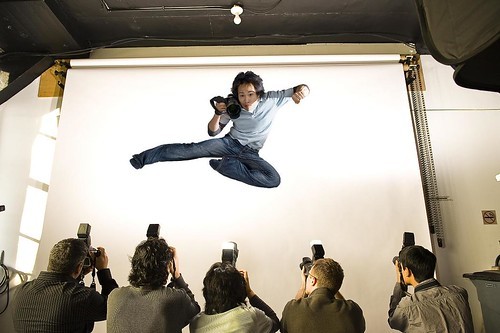NorthernRebel
TPF Noob!
- Joined
- Feb 5, 2009
- Messages
- 10
- Reaction score
- 0
- Can others edit my Photos
- Photos NOT OK to edit
I'm helping friend who has asked me to do production stills for a short movie he is making. Aside from the standard set shots and press kit stuff, we are shooting in front of a green screen this weekend. Since I've never shot in front of a green screen, I have no idea what I'm getting myself into.
The screen is at a studio, and while I'm assuming there will be some type of lighting available at the studio, I'm going to bring along my CLS equipped Nikon with a couple of remote flashes and diffusion umbrellas........just to make sure we have enough light.
Have any of you done any green screen stills?? If so, is there anything in particular I need to watch out for?
Thanks!
The screen is at a studio, and while I'm assuming there will be some type of lighting available at the studio, I'm going to bring along my CLS equipped Nikon with a couple of remote flashes and diffusion umbrellas........just to make sure we have enough light.
Have any of you done any green screen stills?? If so, is there anything in particular I need to watch out for?
Thanks!









![[No title]](/data/xfmg/thumbnail/34/34121-bdee2cb53518626b080a38730454dd5b.jpg?1734164601)





![[No title]](/data/xfmg/thumbnail/37/37533-7e5a25ced65c369c377ecf341b05e1d0.jpg?1734170690)